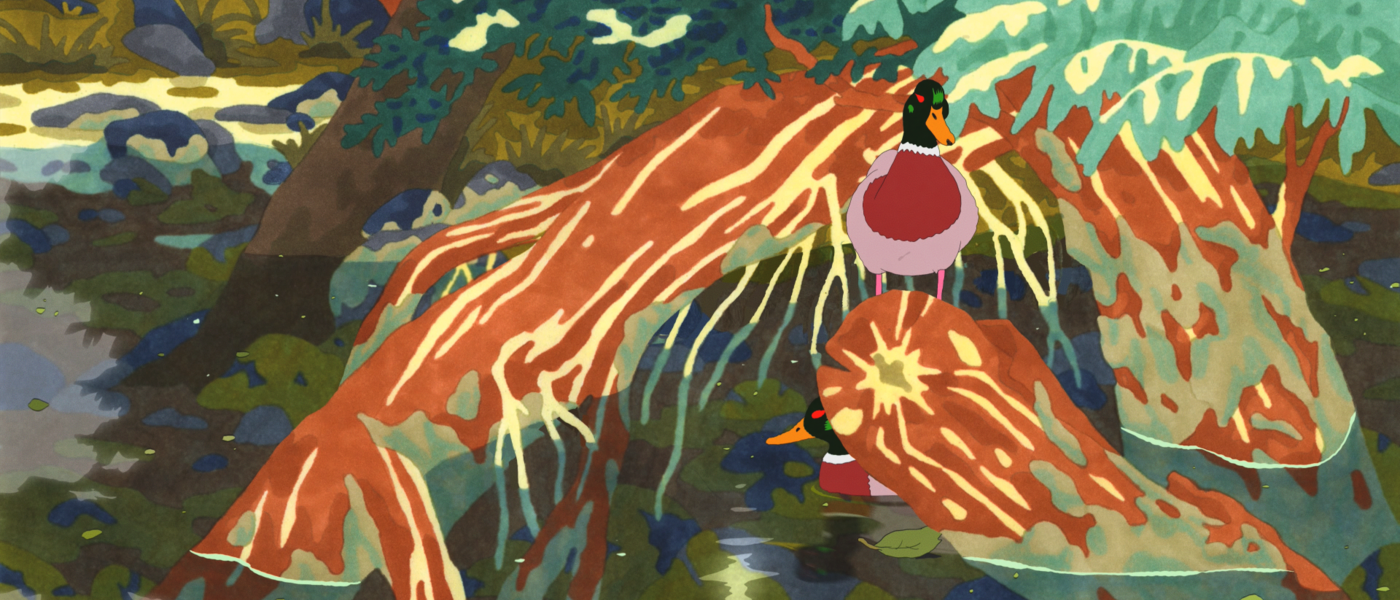Interview with Jocelyn Charles, God is shy director
by Léo Ortuno

by Léo Ortuno
Telling scary stories aboard a high-speed train, that is the starting point of God Is Shy. A film with a distinctive style, in which characters question their greatest fears and seek to unravel the mystery of life to the sound of an enigmatic whistle. Jocelyn Chales delivers a mesmerising first film and practises bold leaps: from the anecdotal to the existential, from the banal to the strange, and from rough sketches to bursts of colour.
Interview with Jocelyn Charles
From clips to film
God Is Shy is my first short film and also the opportunity to firmly establish my artistic universe. While directing the music video Hématome for the band L’Impératrice, with my co-director Roxane Lumeret, I explored the topic of monstrosity, which has become a recurrent theme in my work. In the video Do I Make You Love Me by The Weeknd, I emphasised humour, sometimes even ventured into gore. All of this gave me keys and ideas for scenes that I wanted to put into an original, more personal story.
Horror
I believe that horror is a “popular” genre often - wrongly - associated with a subculture, seen as less noble than drama or romance. Yet it is the only genre that truly adds a new colour to our emotional palette as viewers: fear. It can be paired with others, blended, erased, or smeared. I am fascinated by the work of Ari Aster and I love the idea of injecting humour into situations, like he did in his latest film Beau Is Afraid, or as Jordan Peele also does in his films. I was also deeply moved by The Strangers, which blends genres and tones, and revisits possession films through the lens of Korean shamanism and folklore.
Animation in God Is Shy
My style of animation is obviously influenced by Japanese culture; fine lines, hatching, even the proportions. It is no doubt because I was raised on these authors : from Akira Toriyama’s Dr. Slump for its big-headed characters and the comedy of his cartoons, to Miyazaki’s Princess Mononoke for its sense of horror and the ubiquitous presence of nature. I wanted to tap into the vocabulary of live-action filmmaking in my directing techniques (playing with depth of field, lighting, camera movements…) while sometimes reclaiming an aesthetic specific to animation with distorted perspectives and exaggerated movements.
The characters’ voices
Animation is a medium that has complete control over all its elements. This can create a distance from reality, because we lose what is spontaneous and unexpected. Each sentence helps push the story forward, we don’t indulge in having the protagonists say anything trivial, improvise, or really do anything that would delay the story. However, I feel that this is precisely where we can catch up on reality. It is in the actors’ voices that we reconnect with the life and warmth of reality. That is why I wanted to surround myself with well-established actors whom I trust completely and who can surprise me with their choices. I wanted to make them active participants in the dubbing process and imbue my characters with their unique personalities.